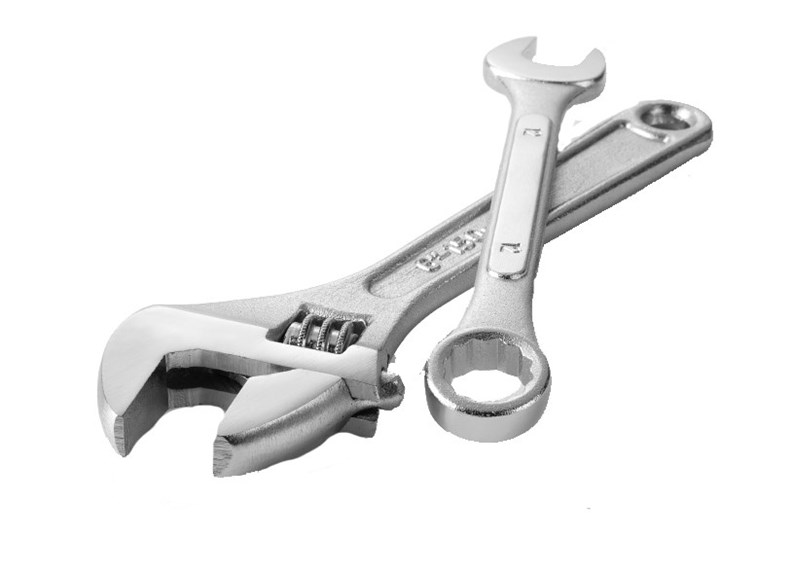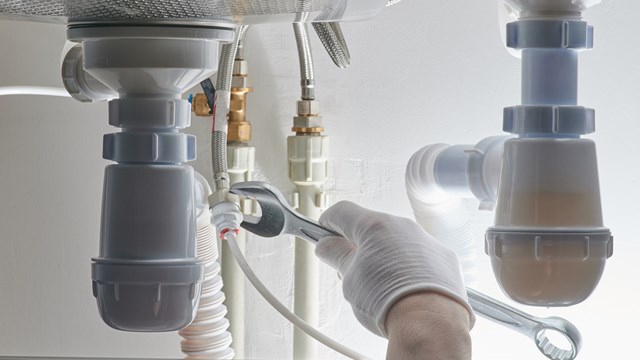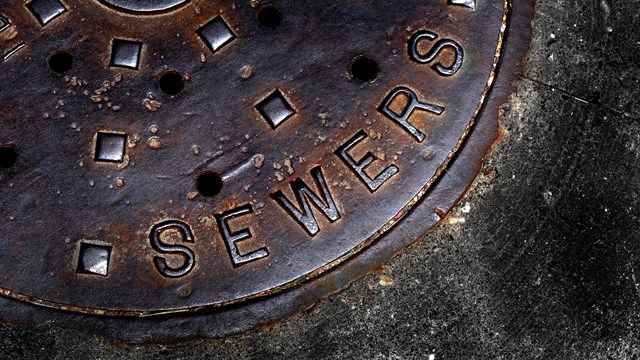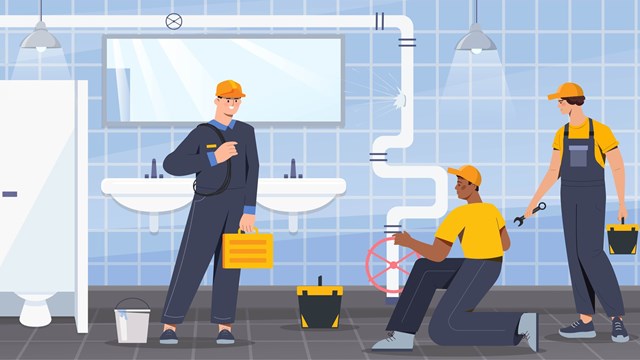What comes to mind when you think of water pressure? For most people these words
conjure up images of the morning shower. Lack of water pressure can turn that much anticipated ritual into a frustrating and unpleasant ordeal. Just ask anyone who's been late to work because they couldn't rinse the suds out of their hair. What many co-op and condo residents who live in high rise buildings don't realize, however, is that excessive water pressure can be just as undesirable as inadequate pressure. If left unchecked, over a period of time, either situation can affect the value of an apartment owner's real estate investment.
A Major Water User
Co-op City, a sprawling 35-building complex in the Bronx, is one of the city's largest water users. Its residents anticipated a major reduction in their water bills when Co-op City was approved by the New York City Department of Environmental Protection (DEP) for the Toilet Rebate Program. This water conservation initiative is overseen by DEP and offers co-op and condo buildings the opportunity to get rid of their old toilets for modern low-flow toilets while earning a $240-per-toilet cash rebate from DEP.
Co-op City had plans to replace their existing five-gallon-per-flush toilets with the TOTO flush toilet model 703, which uses just 1.6 gallons of water per flush. Residents were told by proponents of the new toilets that Co-op City could anticipate a considerable reduction in the average daily home consumption of water in the developmentfrom 125 gallons per day per person to 57 gallonsresulting in substantial savings.
But instead of saving Co-op City residents money, the new toilets brought an array of unforseen headaches and added expenses for many. Before the installation project was completed, residents in hundreds of the complex's units had begun to report problems with the new toilets. We started doing surveys, says Gretchen B. Hazell, who served as board president from 1995 to 1996. We found that there were a large number of leaks, overflows and floods. Many apartments suffered massive damage. Floors and carpeting had to be replaced.
According to Harold Block, president of Brooklyn-based Pace Plumbing, the outfit contracted by Co-op City to buy and install the toilets, Co-op City's management blamed the manufacturer of the toilets because the old toilets, which had lasted for 20 years with no problems, had brass ballcocks. Since the new toilets have plastic parts, Co-op City assumed that the new toilets were faulty. But the plastic ballcocks are fine.
The real culprit, Block adds, was the water pressure at the complex. The allowable pressure in high rises as mandated by New York City is 85 pounds per square inch (PSI), he explains. But in certain parts of Co-op City the pressure is in excess of 150 PSI. Block adds that before work was started, Co-op City's management team had approved the new toilets to be used by Pace and even had them tested by professionals at Stevens Institute of Technology in New Jersey.
According to Block, in response to the problems surrounding the high profile job, Co-op City's management got in touch with the deputy mayor's office and the city's Department of Environmental Protection to request an investigation. In February of 1996, when the work was 30 percent complete, the job was interrupted and the inqu ffb iry found that, indeed, the water pressure was too high. Work was scheduled to resume the second week of September, and Block expects that all the new toilets will be installed before March 1997.
Noel Ellison, interim director of operations at Co-op City, says that he is unable to verify the current PSI at the complex. Our understanding is that the pressure we have now is necessary to pump water up from the city main to the water tower on the roof. It is necessary for the efficient operation of the plumbing that we have now. Ellison adds, It is our understanding that at the time Co-op City was built, there was no standard for water pressure. The PSI came into effect in 1968. It is our attorney's legal position that we are grandfathered in from the previous requirements, so we're not in violation of the code.
A Host of Problems
According to Bob Bellini, vice president of Varsity Plumbing in Flushing, New York, excessive pressure can contribute to leaks and also cause pipes to break, because more water flow equals more gallons per minute. Pipes get accustomed to a certain pressure over time, Bellini explains. If that changes, they can rupture at weak points. He adds that water hammeringa banging noise that comes from the pipes in the kitchen or bathroomis another pressure-related problem. It occurs when the faucet is opened and the water rushes up from the basement at too fast a pace. When the faucet is turned off, it's like slamming on the breaks. Water hammering is very violent to the pipes. Fred Glass, CEO of Water Savers, Inc., adds that excessive pressure can also cause toilet tanks to overflow, as Co-op City residents experienced.
If water pressure is too high, the faucet washers may need to be replaced more frequently and the hot and cold water fixtures can break. Internal components of the toilet's pumping system as well as the fittings on the water pipes themselves may also suffer. Rubber hoses feeding dishwashers and washing machines are also prone to rupturing under undue pressure as are plastic pipelines to ice makers.
The most common evidence of an excessive rate of flow, adds Dick Koral, director of The Apartment House Institute of New York City Technical College in Brooklyn, is when you turn on the faucet and the water comes out with so much force that it splashes right over the sink. Koral points out that while a situation in which the pressure is too low in the shower gets everyone's attention, no one would notice excessive flow in the toilet or shower. But, behind the scenes, the toilet situation could lead to a tremendous waste of water.
If the pressure is too high, every time a resident opens a faucet or flushes a toilet, a greater volume of water comes out, explains Richard Nolte, president of Effective Plumbing which has offices in Manhattan and the Bronx. Because all residential buildings are metered, this can substantially increase water and sewer costs, he points out.
The Mechanics of Pressure
The pressure from the water source in the street is enough to ensure that residents at the top floor of a six-story building get a great morning shower. But feeding water at the proper pressure to the top floors of a high rise is a different matter. It's quite simple, says Konstantin Yevinzon, resident manager at The Alfred, a 38-story, 225-unit luxury condominium located at 161 West 61st Street. We have a water tank above. Four or five thousand gallons of water are pumped up to the tank on the roof from which the water is downfed to vertical pipes that distribute it to various apartments.
According to Nolte, about ten to 15 percent of New York City high rises rely on basement water pumps rather than rooftop tanks to deliver water to each apartment. In buildings with roof tanks, pressure is created by gravity, and is lowest near the roof. In buildings with pumps, pressure starts high in the basement in order to get the water all the way to the top floors. In either case, pressure reducing valves are used to keep all apartments below 85 PSI, says Nolte.
After d8d a while, Bellini says, the valves go out of whack and need adjustments. The problem is getting deep inside the walls to the risers so that you have access to the valves. You have to chop into the walls to get at them.
Monitoring is Easy
While the experts don't always see eye to eye on how often water pressure should be monitoredopinions vary from every day to once a year to once every ten years, based on the age of the building and the frequency of problemsthey do agree that it's an easy process that takes just a few minutes. Some co-ops and condos call in their plumber once to instruct the super on how to perform the procedure. Other buildings prefer to rely only on their plumber for testing.
The best place to perform the test, Bellini explains, is in the bathroom of the lowest floor apartment. You take off the shower head, screw on the pressure gauge and then turn on the hot and cold handles. It will tell you the pressure in that apartment. Other professionals prefer to test at the basement level.
Whether this important test is performed by a member of the on-site team or conducted by an outside professional, one thing is certain. A keen awareness of water pressureboth high and lowcan help co-op and condo buildings maintain good health and avoid costly repairs down the road.
Ms. Mosher is Associate Editor of The New York Cooperator.







4 Comments
Leave a Comment